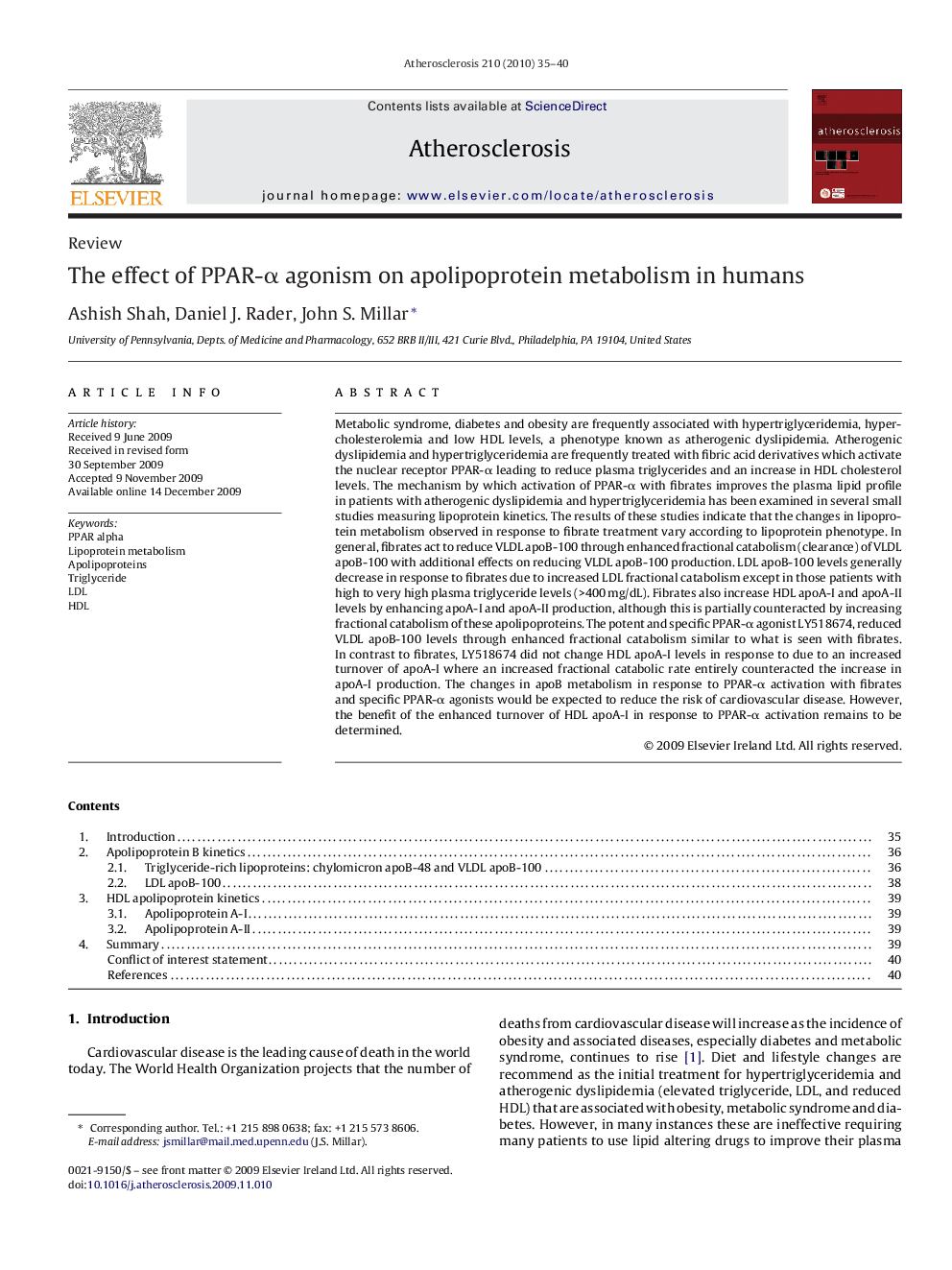| کد مقاله | کد نشریه | سال انتشار | مقاله انگلیسی | نسخه تمام متن |
|---|---|---|---|---|
| 5950839 | 1172406 | 2010 | 6 صفحه PDF | دانلود رایگان |

Metabolic syndrome, diabetes and obesity are frequently associated with hypertriglyceridemia, hypercholesterolemia and low HDL levels, a phenotype known as atherogenic dyslipidemia. Atherogenic dyslipidemia and hypertriglyceridemia are frequently treated with fibric acid derivatives which activate the nuclear receptor PPAR-α leading to reduce plasma triglycerides and an increase in HDL cholesterol levels. The mechanism by which activation of PPAR-α with fibrates improves the plasma lipid profile in patients with atherogenic dyslipidemia and hypertriglyceridemia has been examined in several small studies measuring lipoprotein kinetics. The results of these studies indicate that the changes in lipoprotein metabolism observed in response to fibrate treatment vary according to lipoprotein phenotype. In general, fibrates act to reduce VLDL apoB-100 through enhanced fractional catabolism (clearance) of VLDL apoB-100 with additional effects on reducing VLDL apoB-100 production. LDL apoB-100 levels generally decrease in response to fibrates due to increased LDL fractional catabolism except in those patients with high to very high plasma triglyceride levels (>400 mg/dL). Fibrates also increase HDL apoA-I and apoA-II levels by enhancing apoA-I and apoA-II production, although this is partially counteracted by increasing fractional catabolism of these apolipoproteins. The potent and specific PPAR-α agonist LY518674, reduced VLDL apoB-100 levels through enhanced fractional catabolism similar to what is seen with fibrates. In contrast to fibrates, LY518674 did not change HDL apoA-I levels in response to due to an increased turnover of apoA-I where an increased fractional catabolic rate entirely counteracted the increase in apoA-I production. The changes in apoB metabolism in response to PPAR-α activation with fibrates and specific PPAR-α agonists would be expected to reduce the risk of cardiovascular disease. However, the benefit of the enhanced turnover of HDL apoA-I in response to PPAR-α activation remains to be determined.
Journal: Atherosclerosis - Volume 210, Issue 1, May 2010, Pages 35-40